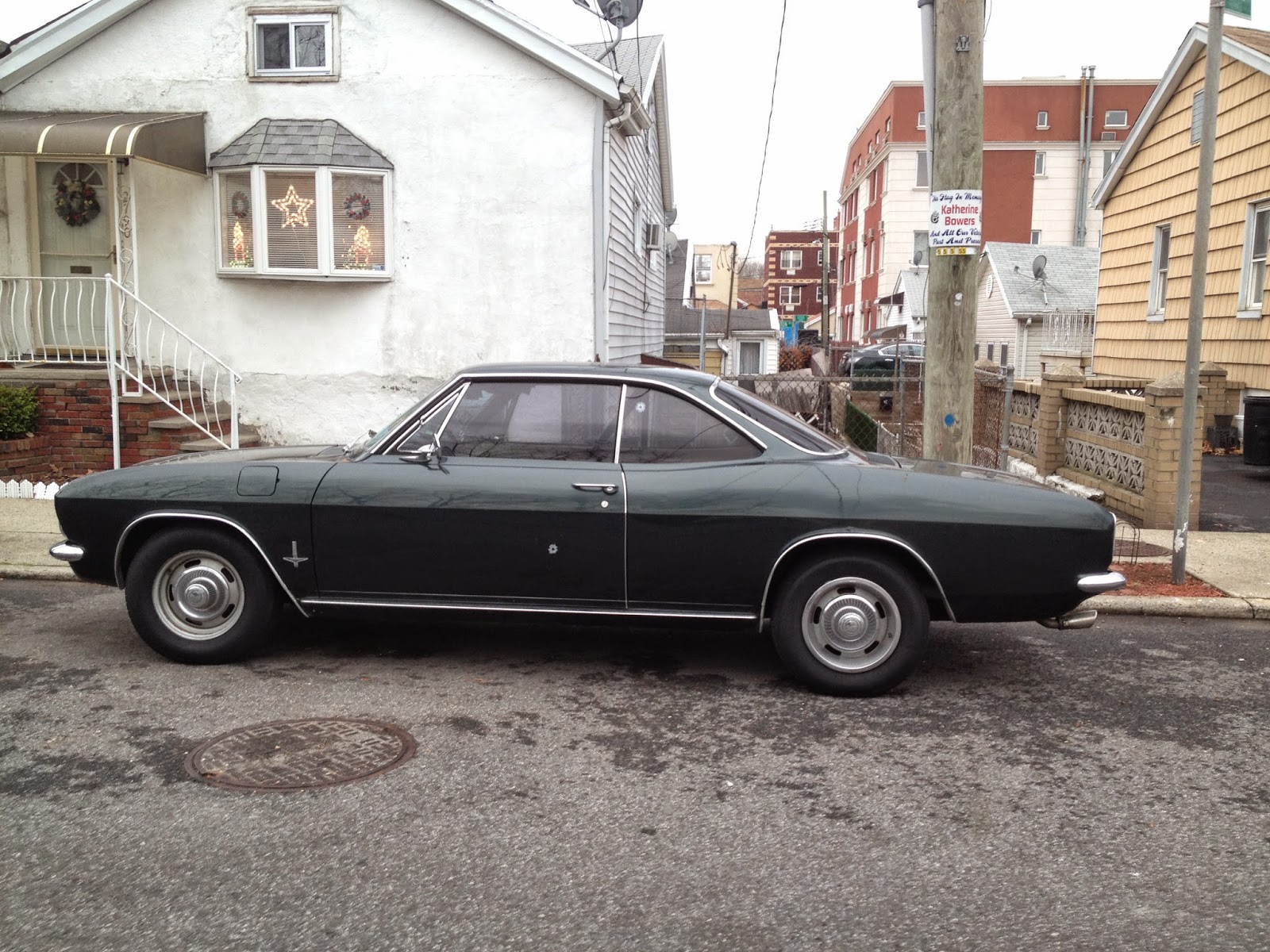AWESOME AT ANY SPEED
Due to a massive internet outage yesterday I'm featuring Show Car Sunday/Monday/Tuesday.
Way down on the Southern end of Brooklyn between Sheepshead Bay and Manhattan Beach is a collection of neighborhood pockets bisected by the Belt Parkway. Unless you're actively rooting around these blocks you might never notice them while on your way to JFK. I poked around a bit wondering what was down in that area when I turned up this little gem:
Way down on the Southern end of Brooklyn between Sheepshead Bay and Manhattan Beach is a collection of neighborhood pockets bisected by the Belt Parkway. Unless you're actively rooting around these blocks you might never notice them while on your way to JFK. I poked around a bit wondering what was down in that area when I turned up this little gem:
Sweet! This is none other than a 1965 Chevrolet Corvair Monza coupe in the beautiful original color Glen Green. This is a landmark car, and really one of the most important and cutting edge Chevrolets ever produced. Even though the Corvair was produced from 1959 to 1969 with only one major redesign, the 1965 model year is one of the easiest to identify; before '65 the car looked totally different, with a flat front end and more square overall styling, and from '66 on that Corvair emblem moved from the hood to the front panel between the pod and the center of the car.
Check out this aggressive styling on such a small car! The prominent shark nose and main horizontal wrap-around body line are very much like the Corvette of the day. Both cars however could not be more different. The first clue is that the door to the gas cap is right there on the front fender. This, ladies and gentlemen, was General Motors only air-cooled, rear engine car.
The Coke-bottle styling on the '65 Corvair was reflected across the entire Chevy line through the beginning of the '70s. Those wheels are not correct for the car but are close enough to pass muster. They are 1968-'70 Chevy Rally Wheels most often seen on Chevelles of the day.
The body lines on these cars are clean as a whistle. When the Corvair was introduced in 1959 it came in a wide array of body styles; the Lakewood station wagon, a van called the Corvan, a pickup truck called the Greenbriar (with a unique side-loading tailgate between the cab and the rear wheels), a convertible, and 2 and 4 doors in both hardtop and pillared. After '65 it was reduced to the droptop and 2 or 4 door hardtops. This one is a Monza which was the sporty version that included bucket seats.
It's hard to see but the little badge in the center of the hood above the license plate says 110 between checkered flags. That means that this car was built with the optional 110 horsepower engine. All engine choices in '65 were 2.7 liter flat-6 cylinder units which have the cylinders laying horizontally. This layout results in a well balanced power plant that has a low center of gravity and is ideal for air-cooling. The 2 large ventilation banks under the rear window supply fresh air for the engine.
In the early 1962 Chevy introduced a turbocharged version of the Corvair called the Spyder. It was good for 150 horsepower, but more importantly it was the very first production car that offered a Turbo as an option. Oldsmobile launched their own turbocharged car called the Jetfire a month later, but the Jetfire was so plagued with problems that eventually the Oldsmobile dealerships offered a free conversion to a standard carburetor. The Spyder never had any issues and they can still be found at car shows to this day. Very few Jetfires remain with their original turbo (some say under 100!).
This is the proud little emblem announcing this as a Monza.
The Corvair was very popular and definitely groundbreaking during its entire run. However, it is one of 2 cars pilloried in Ralph Nadars book "Unsafe at any Speed"(the other car was of course the VW Beetle). Nadar claimed that the transaxle in the Corvair allowed for possible failure which would cause a rear wheel to collapse under the car when cornering. This was true for the first few years of production, but by the time the book came out in '65 the problem had been remedied with a fully independent suspension. Too bad though as people will always remember the Corvair for this accusation much like people will always think of Ford Pintos as about to explode. Still, I was very happy to find this one still in use in 2015 Brooklyn.








No comments:
Post a Comment